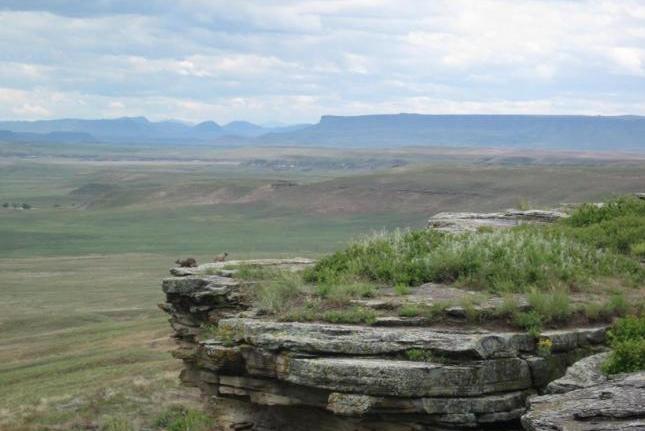WASHINGTON, Aug. 5 (UPI) — From one of the oldest and best preserved buffalo hunting cliffs in the United States to one of the earliest planned urban renewal projects in the country, four new National Historic Landmarks were designated by the U.S. Park Service, spanning the spectrum of American culture.
The locations in Montana, Virginia, Michigan and Colorado are “an example of how the mission of the National Park Service extends beyond park boundaries,” the National Park Service said.
“Though very different from one another, these places reflect the creatively and ingenuity of the American spirit,” National Park Service Director Jonathan B. Jarvis said in a written statement.
The four new sites are:
— First Peoples Buffalo Jump in Cascade County, Mont. — Evidence suggests for 5,700 years this buffalo hunting area “held the paramount position in the Northern Plains ‘bison culture.'” Archaeologists believe the American Indians used it as a place where bison were driven up a hill and over a cliff, providing significant food and materials sources.
— George Washington Masonic National Memorial in Alexandria, Va. — Considered one of the most architecturally significant projects to honor George Washington and one of the boldest private efforts to memorialize him, the memorial combines neoclassical architecture common to American memorials and civic buildings with a modern skyscraper design, the National Park Service said.
— Lafayette Park in Detroit — Once considered a slum area, the 1950s urban renewal project contains the largest collection of works by architect Mies van der Rohe, one of the fathers of the International style of architecture, in collaboration with developer Herbert Greenwald, planner Ludwig Hilberseimer and landscape architect Alfred Caldwell. It is “generally regarded as one of the best and most successful examples of a residential urban renewal development in the nation,” the park service said.
— Red Rocks Park and Mount Morrison Civilian Conservation Corps Camp in Jefferson County, Colo. — Famed for its amphitheater and natural landscape, the area is “one of the few surviving camps in the nation that retains a high concentration of original resources. The amphitheater in the park is one of America’s best known performing arts venues, famous for its natural acoustics, design, and setting.”
The designations are an honor that carry historical and social significance, said William Worden, retired director of the Detroit Historic Commission.
“It’s a big deal in terms of public perception, honor and all of that,” he said. “It doesn’t carry with it any regulatory implications or protections that it didn’t already have being on the National Register of Historic Places, but when you look at the list of National Historic Landmarks in Detroit and the country as a whole, you see there are very few. It is an honor in terms of how Lafayette Park will and should be seen.”






